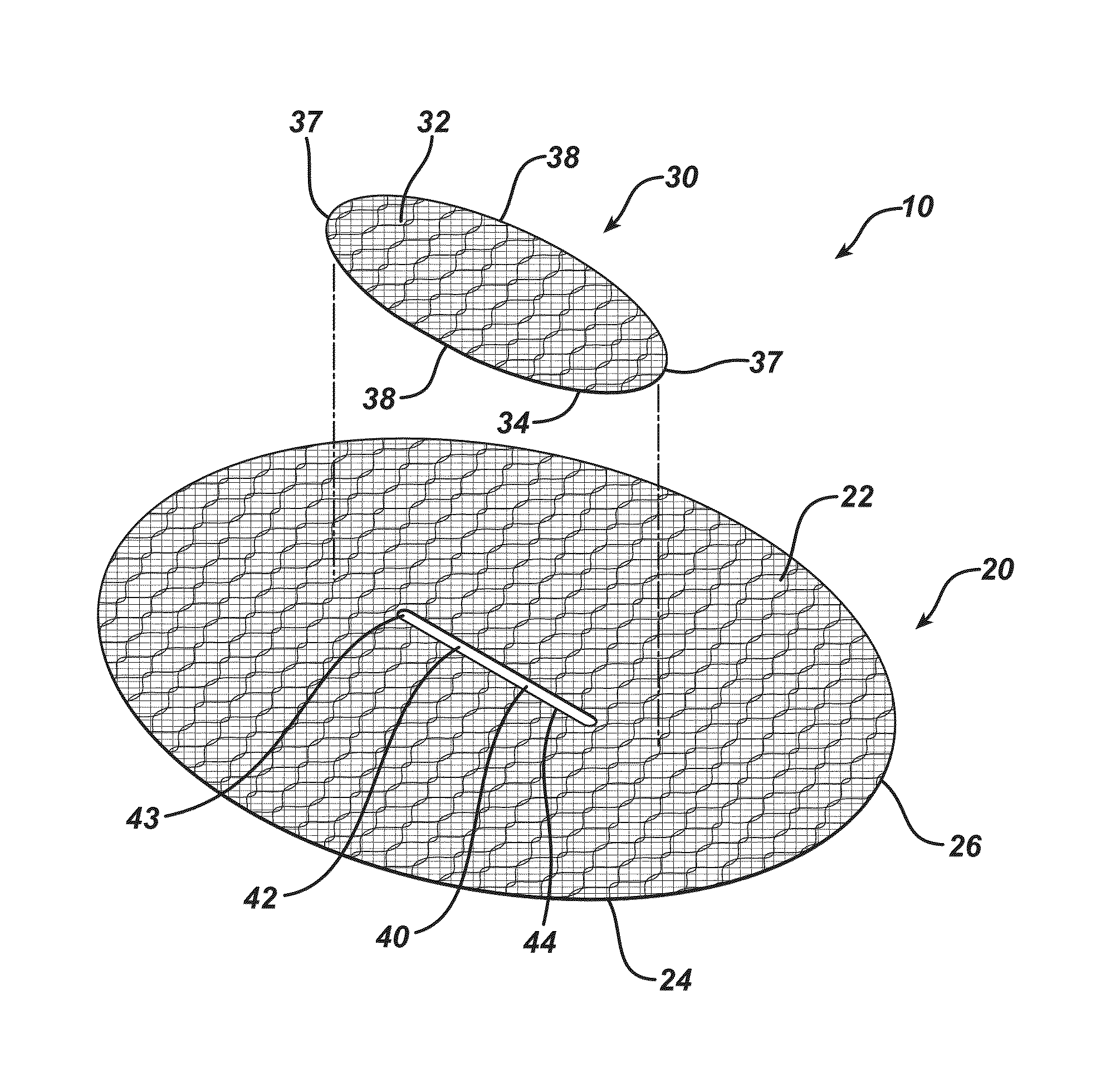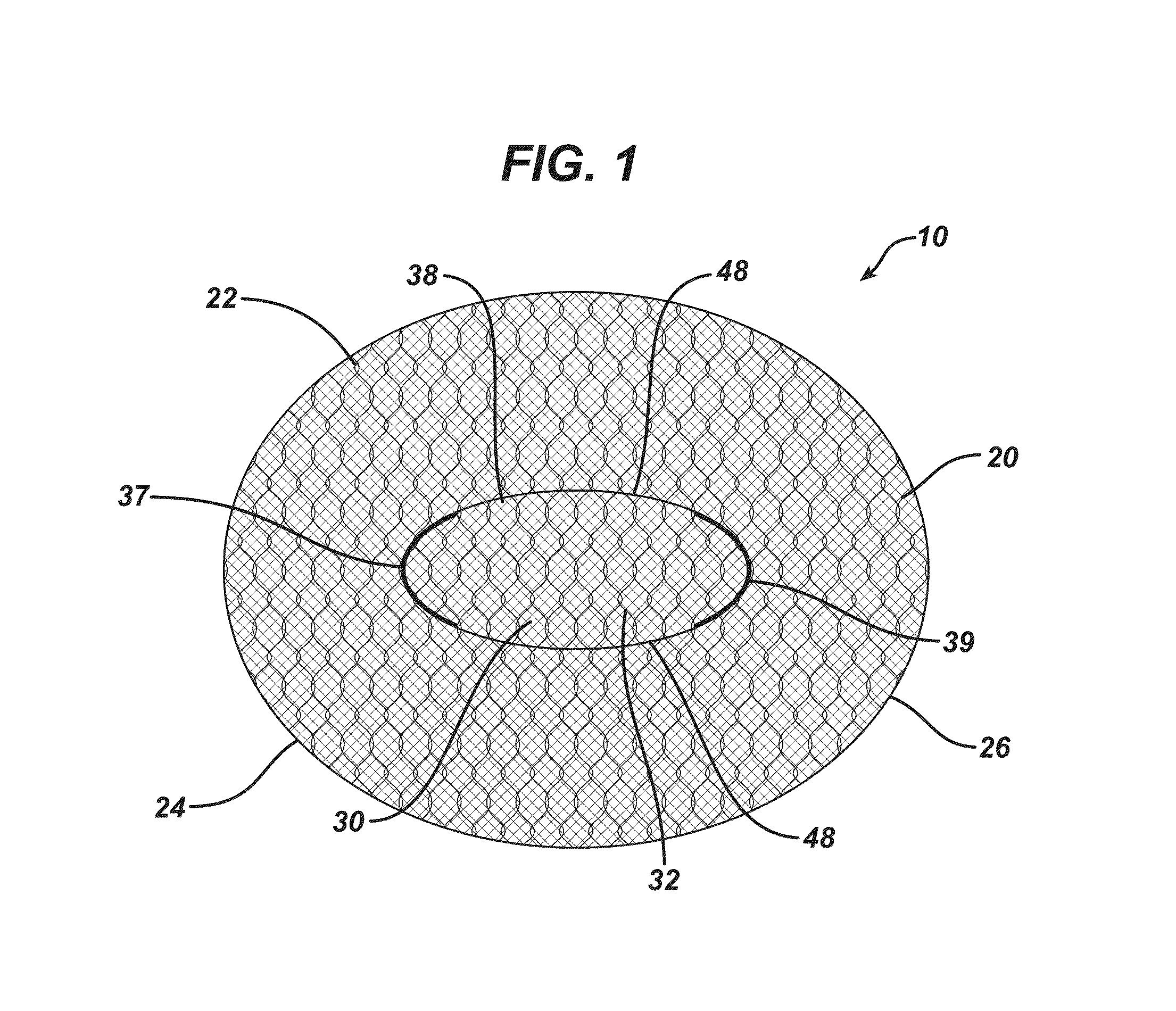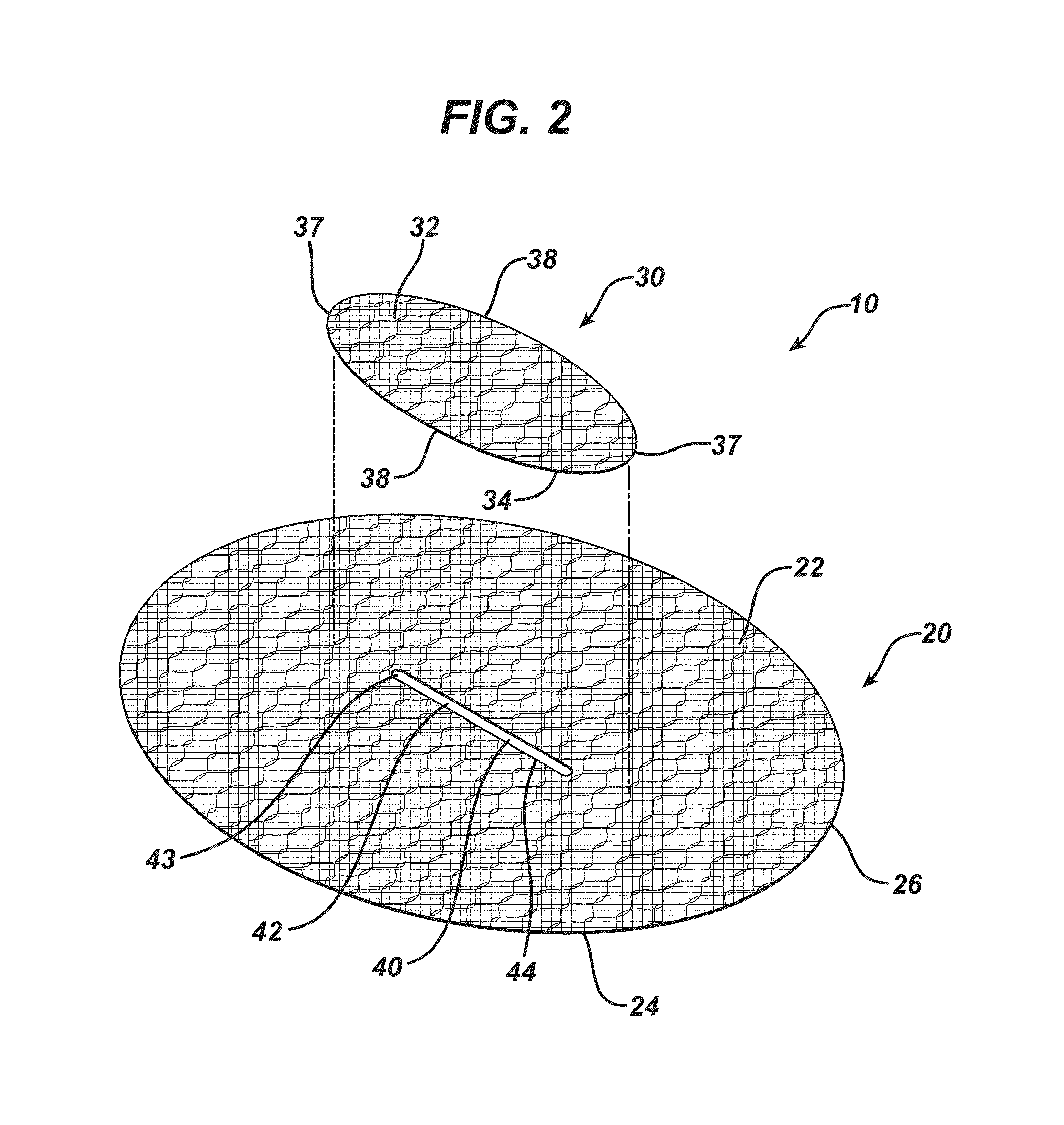Single plane tissue repair patch
a single-plane, tissue repair technology, applied in the field of implantable surgical mesh hernia patches, can solve the problems of tissue separation or rupture, poor visibility during mesh handling and fixation, and typically less desirable optimal outcom
- Summary
- Abstract
- Description
- Claims
- Application Information
AI Technical Summary
Benefits of technology
Problems solved by technology
Method used
Image
Examples
example 1
[0069]A patient with a ventral or incisional hernia is prepared for an open hernia repair procedure in the following manner. The skin area surrounding the hernia is scrubbed with a conventional antimicrobial solution such as betadine. The patient is administered conventional general anesthesia in a conventional manner by induction and inhalation. The surgeon then initiates the surgical procedure by making an incision in the skin and subcutaneous tissue overlying the hernia. In the case of planned intra-peritoneal mesh placement, the hernia sac is opened. The edges of the healthy fascia around the defect are examined and any attachments of the viscera to the abdominal wall are divided to create a free space for fixation of the mesh.
[0070]At this point in the procedure, the surgeon then prepares a mesh tissue repair hernia patch of the present invention having closure flaps and a base member for insertion through the abdominal wall defect and into the abdominal cavity such that the to...
PUM
 Login to View More
Login to View More Abstract
Description
Claims
Application Information
 Login to View More
Login to View More - R&D
- Intellectual Property
- Life Sciences
- Materials
- Tech Scout
- Unparalleled Data Quality
- Higher Quality Content
- 60% Fewer Hallucinations
Browse by: Latest US Patents, China's latest patents, Technical Efficacy Thesaurus, Application Domain, Technology Topic, Popular Technical Reports.
© 2025 PatSnap. All rights reserved.Legal|Privacy policy|Modern Slavery Act Transparency Statement|Sitemap|About US| Contact US: help@patsnap.com



